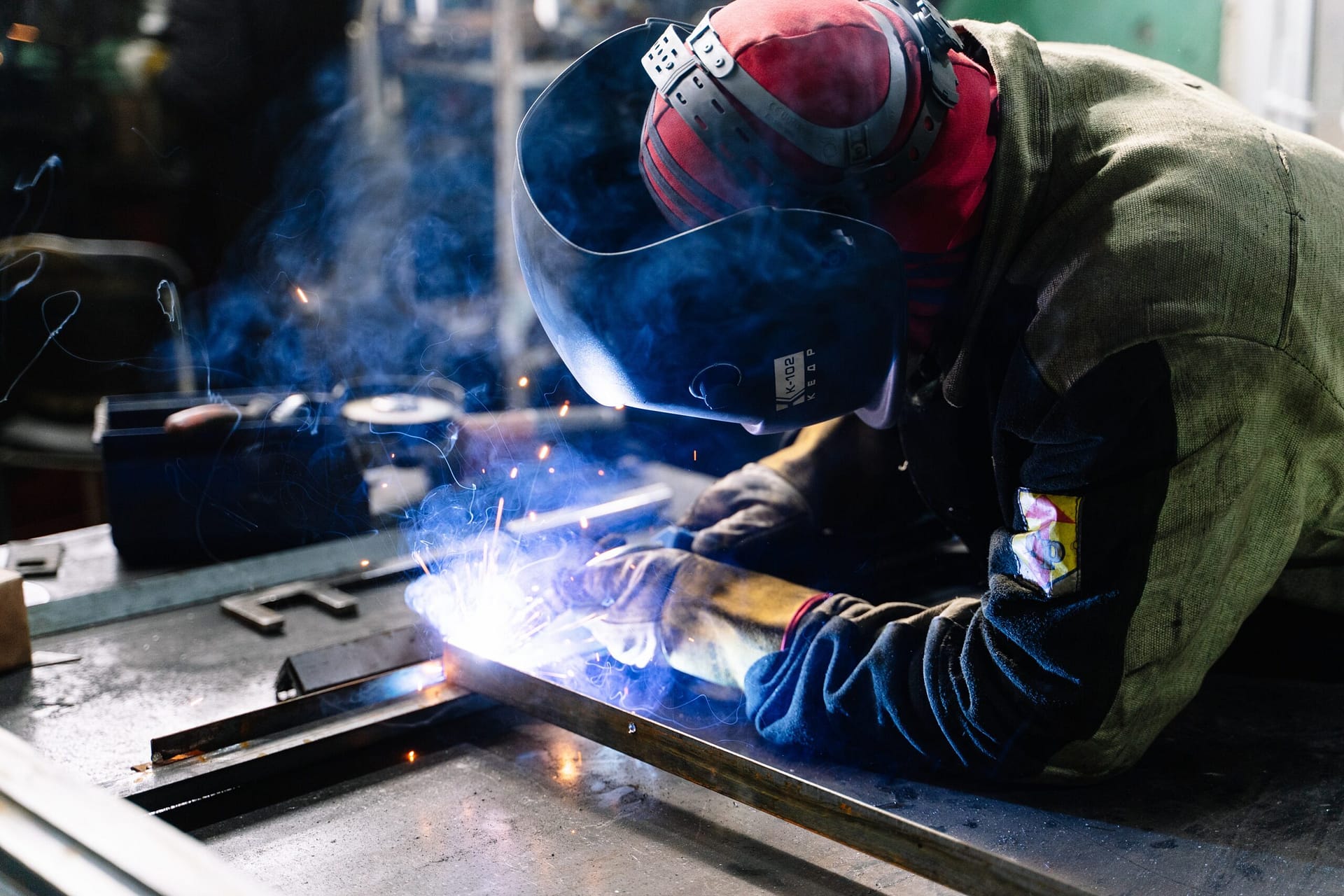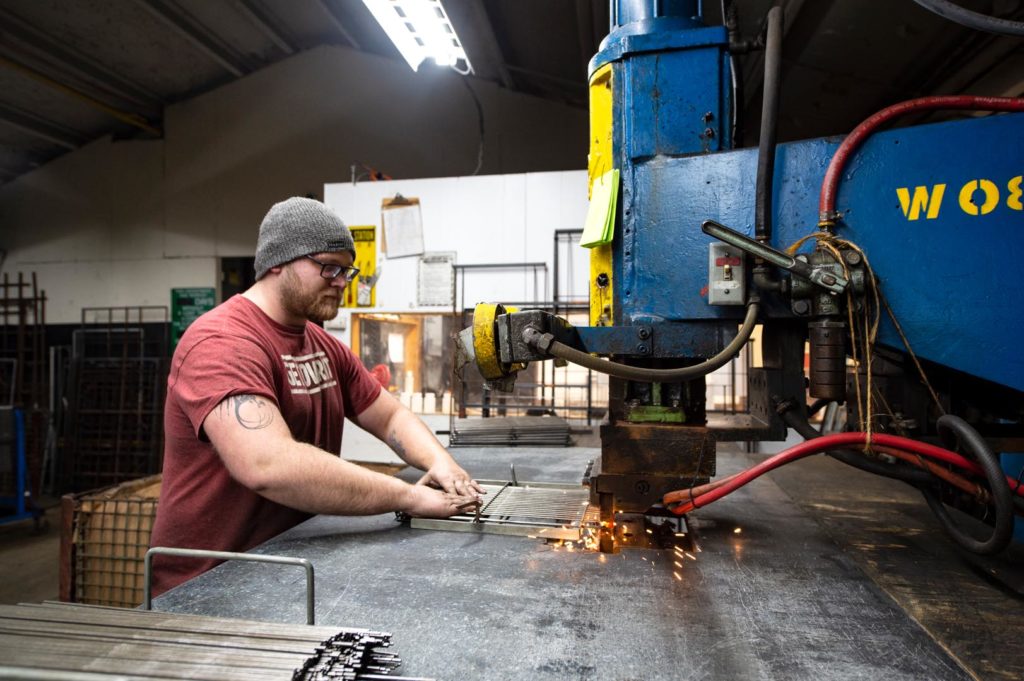All About Welding: Secret Insights Into Techniques and Best Practices for Success
Welding encompasses a range of techniques, each fit for certain products and applications. Recognizing these techniques, such as GMAW, SMAW, and TIG, is essential for accomplishing excellent outcomes. Furthermore, the right tools and safety methods can not be neglected. As prep work and fixing play critical duties in the welding procedure, understanding these elements can considerably improve the high quality of the last product. What are the essential variables that assure a successful weld?
Comprehending Various Welding Strategies
Welding techniques incorporate a variety of approaches, each suited to particular applications and products. Among the most common techniques are Gas Metal Arc Welding (GMAW), Protected Steel Arc Welding (SMAW), and Tungsten Inert Gas Welding (TIG) GMAW, likewise called MIG welding, is popular for its speed and convenience, making it excellent for slim materials. SMAW, or stick welding, is preferred for its simplicity and effectiveness in outside settings, specifically with thicker steels. TIG welding supplies accuracy and control, making it ideal for detailed job and non-ferrous steels (Montana Mobile Welding and Repair Belgrade). Each technique has its unique benefits and considerations, permitting welders to pick the very best method based on the project's demands, material kind, and preferred results. Understanding these strategies is essential for successful welding
Important Welding Tools and Devices
While different welding methods require details abilities, the ideal equipment and tools are just as important for achieving high quality outcomes. Crucial welding devices includes welding machines, which differ relying on the technique-- such as MIG, TIG, or stick welding. Safety gear, consisting of handwear covers, aprons, and headgears, guarantees security and convenience during the procedure. In addition, clamps and components aid safeguard materials in location, guaranteeing precision in welds. Consumables like welding rods, cable, and shielding gas are likewise important components that influence the top quality of the weld. Devices such as cutters and grinders help with surface preparation and post-weld ending up, contributing to an expert result. Purchasing high-grade tools ultimately boosts the efficiency and efficiency of welding projects.
Safety And Security Practices in Welding
Proper safety techniques are necessary in the welding sector to protect workers from potential dangers. Welders have to use appropriate individual safety devices (PPE), consisting of helmets with correct shading, gloves, and flame-resistant apparel. Appropriate ventilation is essential to lower exposure to damaging fumes and gases produced during the welding process. Furthermore, workers should be learnt the proper handling of welding tools to avoid accidents. Fire safety actions, such as maintaining combustible materials away from the welding location and having fire extinguishers easily available, are necessary. Normal examinations of equipment and workspaces can aid determine prospective hazards prior to they bring about crashes. By sticking to these safety methods, welders can create a more secure working atmosphere and minimize threats associated with their profession.
Readying Products for Welding
Preparing products for welding is an important action that considerably influences the high quality and integrity of the end product (Montana Mobile Welding and Repair Belgrade). Correct prep work includes cleansing the surface areas to remove contaminants such as dust, corrosion, and oil, which can endanger the weld. Methods such as grinding, sanding, or utilizing solvents are frequently used to achieve a clean surface area. Additionally, making certain that the products mesh snugly is crucial; gaps can cause weak welds. It's likewise essential to consider the positioning and positioning of the parts, as this will influence the ease of welding and the last end result. Finally, choosing the ideal filler material and making certain compatibility with the base metals is necessary for attaining strong, sturdy welds
Tips for Getting High-Quality Welds
Achieving top quality welds requires attention to detail and adherence to finest practices throughout the welding process. Appropriate joint preparation is vital, making sure surface areas are cost-free and tidy from contaminants. Choosing the appropriate filler product and welding strategy based upon the base metals is important for ideal bonding. Keeping constant travel rate and angle while welding can advertise and avoid flaws harmony. Additionally, managing heat input is vital; excessive warmth can cause bending and deteriorated joints. If necessary, consistently inspecting the welds throughout the process permits for immediate modifications. Lastly, using appropriate post-weld therapies, such as cleansing and tension alleviation, can boost the durability and honesty of the weld, eventually making certain a successful result.
Fixing Usual Welding Issues
Welding usually provides challenges that can affect the high quality and honesty of the end product. Common issues such as porosity, irregular weld grains, and overheating can emerge, each requiring specific fixing methods. Recognizing these troubles is important for welders to improve their abilities and attain ideal results.
Porosity Troubles Explained
Although porosity can typically be overlooked, it continues to be an important concern in welding that can compromise the integrity of a completed product. Porosity describes the visibility of small gas pockets within the weld bead, which can damage the joint and lead to premature failing. This trouble commonly emerges from impurities, dampness, or incorrect shielding gas protection during the welding procedure. To mitigate porosity, welders should verify that the base products are tidy and dry, utilize ideal protecting gases, and preserve consistent welding parameters. Regularly inspecting the equipment and setting can additionally help recognize prospective problems prior to they show up in the weld. Addressing porosity efficiently is necessary for attaining strong, durable welds that meet quality criteria.

Irregular Weld Beads
Inconsistent weld beads can greatly affect the quality and strength of an ended up product. Different variables contribute to this problem, including inappropriate travel speed, incorrect amperage setups, and inconsistent electrode angles. When the welder relocates too rapidly, a grain might appear slim and lack infiltration, get more info while relocating as well gradually can trigger extreme build-up. Additionally, utilizing the incorrect amperage can cause either undercutting or too much spatter, both of which concession weld honesty. The welder's method, such as irregular lantern movement, can also bring about unequal grain look. To minimize these troubles, welders must concentrate on keeping stable, regulated motions and guaranteeing correct equipment settings to achieve harmony in their welds. Uniformity is essential to accomplishing strong and dependable welds.
Overheating and Bending Issues
Extreme heat throughout the welding procedure can bring about significant overheating and buckling concerns, impacting the structural integrity of the workpiece. These troubles commonly manifest as distortion, which can compromise alignment and fit-up, making more assembly challenging. Factors adding to overheating include the option of welding parameters, such as voltage and take a trip speed, along with the sort of product being bonded. To reduce these concerns, welders must preserve consistent travel speed and suitable warm input while monitoring the work surface temperature. Furthermore, pre-heating or post-weld warm treatment can help ease stresses brought on by fast air conditioning - Montana Mobile Welding and Repair Fabrication. Regular inspection and adherence to finest techniques are necessary in preventing overheating and making certain the long life and dependability of bonded frameworks
Often Asked Inquiries
What Are the Profession Opportunities in the Welding Industry?
The welding market supplies varied job possibilities, including settings as welders, engineers, inspectors, and educators. Experts can function in manufacturing, building, aerospace, and vehicle industries, gaining from strong need and affordable wages in numerous duties.
Just How Can I Enhance My Welding Rate Without Giving Up Quality?
To boost welding rate without giving up high quality, one should exercise reliable strategies, maintain devices, maximize setups, and boost hand-eye control. Regular training and seeking responses can additionally significantly contribute to attaining much faster, high-quality welds.
What Qualifications Are Available for Welders?
Countless accreditations exist for welders, consisting of those from the American Welding Society (AWS), the National Facility for Building Education And Learning and Research (NCCER), and numerous industry-specific organizations. These qualifications boost employability and show ability efficiency.
Exactly How Does Welding Influence the Properties of Metals?
Welding influences the buildings of steels by changing their microstructure, which can result in adjustments in solidity, ductility, and strength. Heat input and air conditioning rates throughout the process substantially impact these material qualities.
Can I Weld Dissimilar Metals Together?
